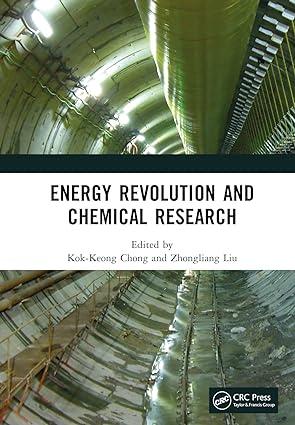Question
This project is intended to introduce the student to the collection and evaluation of fluid property data to be used in a black oil simulation
This project is intended to introduce the student to the collection and evaluation of fluid property data to be used in a black oil simulation study. In addition, the student will have the opportunity to begin to appreciate some of the cause-and-effect relationships that occur during the history match portion of a simulation study.
In this assignment, you are given a fluid analysis report from which you will prepare the fluid description portion of a black oil model. This data is provided as a separate attachment to this document. From this data, you are to prepare a representative three-phase fluid description for a black oil simulation study. This fluid description, to be prepared in CMGs IMEX format, will then be incorporated into a 10x10 diagonal model, similar to the one you used in Project A (keep as oil/wat two-phase model). Please submit a final four-page letter-report that clearly discusses and fully answers the questions below. Please do not exceed four (4) total pages use the same letter format as used in Project A, except page 3 will be only the IMEX input fluid property section see Appendix A of this document and page 4 will be the viscosity information used in item 5 (see below). Be prepared to present and discuss your results with the class.
1) Assuming that the attached fluid sample is appropriate and representative, prepare the data (Bo, Rs, o, Bg, and g) for use in IMEX by adjusting for the proper separator conditions. On page three of your letter, provide a printout of the PVT table to be used in the simulation input deck (use PVT BG keyword - see Exhibit A at the end of this description). This should be the only item on page three use a non-proportional font, such as courier. Also, plot the data and compare with the pre-separator-corrected properties provided in the report. Note that a different, but proper, separator test (not provided in the fluid study) yielded a bubble point flash formation volume factor of 1.3723 rb/STB and a flash GOR of 787.3 SCF/STB. These values should be used to adjust1 the (differential) observations provided in the attached fluid analysis report.
2) Incorporate the fluid description from number 1 above into a 10x10, diagonal grid, quarter 5-spot model, which is similar to the one used for Project A. For 1 Moses, P.L.: Engineering Application of Phase Behavior of Crude Oil and Condensate Systems, JPT (Jul 1986) 715-723. Assignment_B_2023.doc consistency, posted on blackboard is an input file to use for this work (10x10_DIAG_for_proj_b_2023.dat). Keep the model as a two phase (oil/water) system your gas properties will not be relevant for the model runs (but you will still need to determine them for this exercise). Run a base case projection long enough to show the water-cut behavior for this fluid scenario (beyond 50%). 3) Run and compare the sensitivity of the breakthrough timing (use 50% watercut to designate breakthrough timing) assuming oil viscosity values of 5, 10, 15 and 20 percent above and below the oil viscosity provided in the report. Compare these results by plotting breakthrough time versus model initial viscosity, as well as a comparison of the different cases using a water-cut versus time plot. Note 1: Assume that an overall shift of the entire oil viscosity versus pressure curve is appropriate (use Excel for this). Note 2: Use Results Viewer to determine the initial viscosity used in each of the above mentioned models. Hint: You will have to request oil viscosity output see IMEX manual. 4) Now assume you just received some updated relative permeability data. You were also informed that the new PVT data was on its way but in the meantime you should use oil viscosity values 25% lower than those provided in the old report. Create a new observed case (refer to this case as 2023_PT4_OBS) using the below relative permeability curves and an oil viscosity of 75% of the values provided in the report. Sw krw krow 0.20 0.00 0.250 0.30 0.02 0.160 0.40 0.04 0.100 0.44 0.06 0.064 0.48 0.08 0.048 0.52 0.12 0.036 0.56 0.16 0.028 0.60 0.24 0.015 0.70 0.50 0.000 5) Next, assume that a new PVT evaluation was conducted and found that the more appropriate viscosity values are as follows: Pressure Vo PSIA cp 15 0.880 400 0.588 800 0.556 1200 0.450 1600 0.420 Assignment_B_2023.doc 2000 0.438 2400 0.375 2800 0.383 3200 0.346 3600 0.357 4000 0.329 4352 0.294 4600 0.339 4800 0.357 5200 0.340 5600 0.380 Starting with the above viscosity values, determine (calibrate) the oil relative permeability that yields a similar breakthrough as the observed case created in number 4 (Case 2023_PT4_OBS). Note that you will need to adjust the above viscosity data to ensure monotonicity (provide a tabulation and a plot of your revised viscosity data compared to those above on page four (4) of your report). Call this new case 2023_HM. Show your oil rate match by plotting the observed case, pre-adjustment case, and post-adjustment case. What is the new calibrated (history matched) kro value at a water saturation of 20%
Step by Step Solution
There are 3 Steps involved in it
Step: 1

Get Instant Access to Expert-Tailored Solutions
See step-by-step solutions with expert insights and AI powered tools for academic success
Step: 2

Step: 3

Ace Your Homework with AI
Get the answers you need in no time with our AI-driven, step-by-step assistance
Get Started


